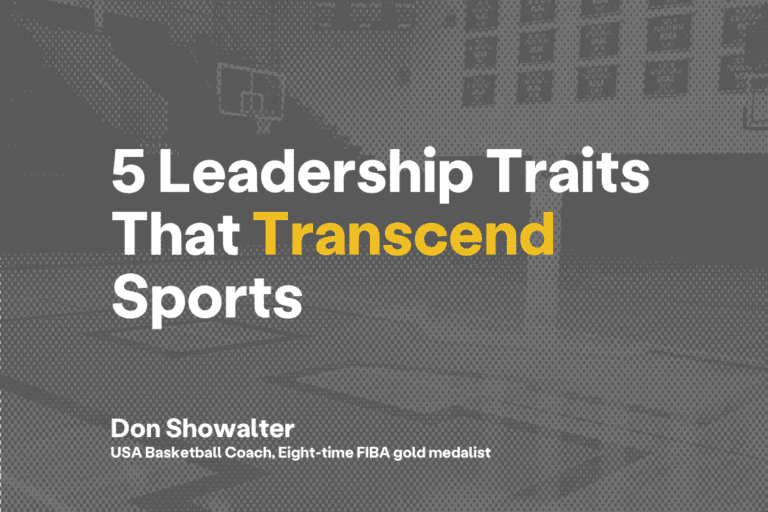4 Tips for A Successful Arts Program
- Education isn’t a competition; be open to sharing resources and strategies with other leaders.
- Learning is dynamic, so the material and program goals that the students are exposed to should be as well.
- Passionate students work harder and produce better results.
Picture this: Hundreds of student filmmaking awards. A robust and well-connected alumni network. Recognition from regional, national, and international film festivals.
You may be surprised to learn that this gold standard for high school digital filmmaking programs isn’t at an elite arts school in New York or Los Angeles, but rather inside a renovated storage closet at Ballard High School, a suburban Seattle public school.
The BHS Digital Filmmaking Program now boasts more accolades than its classroom walls can contain. Ballard students and their films have been nominated for and won awards from the National Academy of Television Arts & Sciences, the Northwest Regional Emmys, and the National YoungArts Foundation, and have been screened at scores of domestic and international film festivals.
Alumni of the program have continued their education at prestigious film schools like NYU and USC and have achieved professional success in the industry; two BHS alumni even went on to found one of the nation’s most influential young filmmakers festivals, the National Film Festival for Talented Youth (NFFTY).
Matt Lawrence, founder and longtime director of the BHS Digital Filmmaking Program, is a master of doing more with less. He has succeeded in his goal to create a vibrant film program that can keep pace with the world’s best.
Here, Lawrence explains how he was able to ignite that fierce and fiery spirit within students, and shares tips for art programs that are striving for innovation and success—regardless of size and resources.
#1: Steal from the best
Like any great artist, the first piece of advice Matt Lawrence offers is to, “steal from the best.”
Of course, Lawrence isn’t just talking about emulating Spielberg’s tracking shots or Hitchcock’s techniques for building suspense. Instead, he wants you to learn from and collaborate with other great educators, leaders, and mentors in your field.
“One of the things I would advise people who are trying to build a program is that you don’t need to make everything yourself,” he says. “There’s no need to reinvent the wheel. If someone’s got something that’s working really well, use it. That’s one of the great things about being in education.”
Stealing from the best inspired Lawrence to partner with other media arts educators in the Puget Sound region to create the Media Educators Excellence Team (MEET), a group with the intention of providing a space where Seattle-area teachers could come together to share ideas and collaborate in service of becoming better educators.
After the inception of MEET, it became much easier for Lawrence to learn and share tips for art programs, and to find the teaching strategies and materials that made it easiest for his students to learn.
“One of the wonderful things about working as an educator is that people help each other out,” Lawrence reflects. “They share things. All the time. For free. It makes all of our programs better, and it benefits all of our students.”
With these resources, Lawrence and other educators could easily adjust to the unique and dynamic needs of their students, as well as to changing trends in an already dynamic industry. This helped to ensure that their programs were consistently able to provide students the support required to meet these needs.
To get started with tip number one, share this article on social media, and see what your community thinks about these tips for art programs.
Don’t be afraid to mix your mentoring techniques with the advice and methods of others, Lawrence advises. A program can’t truly grow stronger without trying out new things.
#2: Think of your obstacles as opportunities
The second of Matt Lawrence’s tips for art programs revolves around turning challenges into opportunities.
As you’re working with other educators to find the curriculum that works for your program, there will undoubtedly be obstacles that come your way. Lawrence encourages you to pivot around these challenges as they begin to surround you.
He discovered the necessity of embracing the silver linings that challenges create on his first day with the BHS digital filmmaking program:
“I saw the classroom and I had concerns. It brought up every scary story you hear about teaching high school, as it was pretty clear that the classroom had been originally designed as a storage space for the library. It was much more cramped than a typical classroom, and I remember thinking, ‘Boy, you know, as soon as I get some cred I’m going to petition to be out of here.’”
However, instead of surrendering to his limitations, Lawrence embraced the potential it offered:
“I noticed that you could only fit 24 desks inside it. And I became aware of the silver lining. With this cap, I could have more quality interactions with my students. And the silver lining was important enough that I came to be very happy in this storage closet.”
Lawrence’s silver lining allowed him to build a program that in turn afforded his students the ability to see their own silver linings. He intentionally created a program where the curriculum was constantly changing and evolving with the needs of his students.
Learning is dynamic, so the material and program goals that the students are exposed to should be as well.
“As the students grew with the program, I grew with the program too,” Lawrence notes. “I could see how the students were doing, and start to build the scaffolding for the next year.”
This made the BHS digital filmmaking program unique, because no participant needed to fit into a fixed curricular mold.
“Be ready to evolve, and support other educators as they do the same,” Lawrence advocates. Part of building a program is allowing its curriculum the room required to grow and change. The best way to do this is to allow your own mindset the same room required to adjust.
#3: Teach to your student’s passions
While Lawrence wanted his curriculum for teaching digital media to be dynamic, he also wanted it to be relevant to his students’ interests:
“In terms of building a program, I think the important thing to keep in mind is to help students connect their passions to the projects that they’re doing. Give them a diverse enough curriculum that they’ve got ample opportunity to discover their unique interests and talents.”
When students are passionate about the material, they will hold themselves and their peers more accountable, resulting in harder work and better results.
“This is a place where the things they care the most about become part of their school curriculum,” Lawrence explained, “That’s one of the wonderful things about teaching filmmaking. Film is a vehicle, but the content is supplied by the students.”
For a group of passionate, dedicated students, Lawrence reminds us, the sky is the limit.
#4: Don’t forget about your alumni
The last of Lawrence’s tips for art programs is to build up your alumni network.
In virtually every field, the old adage rings true: “it’s not what you know, it’s who you know.” While talent and knowledge are both necessary conditions for success, it can’t be ignored that many opportunities can arise from just being in the right place and knowing the right people.
Of course, this is especially true in the notoriously nepotistic film industry. But Lawrence doesn’t let this stereotype discourage his students or diminish the impact of his program—he allows it to strengthen it.
“As the students head towards college or career, they need to have scaffolding that helps to support them,” Lawrence says. “That’s one of the ways that I use our alumni network. I always have students who graduated come back after their freshman year. Then, their experiences and advice are really fresh in their mind.”
Past film students also help to provide equipment, internships and advice to the current high schoolers.
“This network has been a tremendous [asset] to students entering the network or going to college,” Lawrence says. “We have many potential opportunities that we’re able to offer to students that come through that network. And, I’m touched that they remember us. And that they’re still helping out.”
They also act as an inspiration to the aspiring Ballard filmmakers, as many of them boast their own successful careers in film.
“It’s inspiring to have been with the program long enough to see students gaining traction in their careers,” Lawrence adds. “That is very rewarding.”
Networking gives your students a crucial head start before their careers have even begun. By intentionally keeping in contact with past students, Lawrence created an opportunity for alumni to strengthen the BHS digital filmmaking program in their own unique way—encouraging future students to remain engaged for years to come.
Doing this will not only ensure that your program always has a steady flow of support, but it will also guarantee that the lessons and values that your program sought to inspire will never be forgotten.
While Matt Lawrence has since retired, his tips for art programs remain incredibly valuable, as seen by his students’ accomplishments under his direction.
View current and past films from the Ballard High School Digital Filmmaking Program here.











